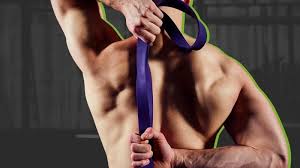Poor joint flexibility can have a negative impact on your health, leading to quick fatigue. However, exercises aimed at improving flexibility can help prevent these problems.
It is also important to pay attention to your physical condition and be aware of the symptoms of Joint Hypermobility Syndrome (JHS) – a connective tissue disorder where a person’s ligaments are excessively lax.
Joints in individuals with JHS are unstable, often leading to dislocations. If the range of motion in your joints is unnaturally large, there is a high probability that you have this condition.
Symptoms of JHS, such as joint pain, swelling, dislocation, and popping, usually manifest during or after exercise. If you notice these symptoms in yourself, it is essential to consult a doctor for diagnosis and treatment planning.
Benefits of Joint Flexibility
Poor joint flexibility can have a negative impact on your health, leading to quick fatigue. Improving flexibility can help avoid these issues.
One way to reduce injury and improve muscle condition is by performing flexibility exercises, such as stretching. Stretching helps warm up the muscles, especially if you have tight or tense muscles that cannot fully relax.
When you use a foam roller to stretch the length of a muscle, you contribute to its return to its original shape. Relaxed muscles can help improve long-term flexibility.
Research shows that improving flexibility can lead to a decrease in stress levels and an increase in energy.
Furthermore, good flexibility can reduce the risk of injuries. A more flexible body allows for better execution of various movements, which is essential for everyday tasks and can increase your efficiency at work.
Regular exercises aimed at improving flexibility, such as yoga or Pilates, can help:
- Reduce the risk of cardiovascular diseases.
- Lower blood sugar levels.
- Improve overall health.
Exercises for Flexibility
Incorporating flexibility exercises into your workout routine is a great idea. It’s beneficial to stretch after a workout when your muscles are still warm.
Another excellent way to increase flexibility is by practicing yoga or Pilates. These flexibility exercises help stretch the muscles and improve overall body flexibility.
Using a foam roller is another fantastic method to enhance flexibility and reduce stress on the muscles. The roller can help relax tense muscles and alleviate muscle soreness.
Types of Workouts
You can improve flexibility through four different types of exercises: static stretching, dynamic stretching, active isolated stretching, and myofascial release.
Attempting to push beyond your limits can lead to regression. Therefore, move slowly and confidently, and stop if you experience any pain.
Static Stretching: Static stretching is a type of stretching where you elongate a muscle to its furthest point and hold the position for a specific period, typically between 15 to 60 seconds. The goal is to increase the muscle’s flexibility and improve its range of motion. During a static stretch, you should feel a gentle pull or tension in the muscle, but it should not be painful. If you experience any pain, it indicates that you have stretched too far, and you should ease off the stretch. It’s important to remember to breathe deeply and relax into the stretch, allowing the muscle to gradually lengthen. Static stretching is commonly performed after a workout when the muscles are warm, as it helps to improve overall flexibility and prevent muscle tightness.
Dynamic Stretching: Dynamic stretching involves performing active movements that mimic the motions of the activity you’re about to engage in. It helps to warm up the muscles and joints, increase blood flow, and prepare the body for physical activity. Unlike static stretching, dynamic stretching involves continuous and controlled movements through a full range of motion. This type of stretching is often used as part of a warm-up routine before sports, workouts, or any physical activity that requires mobility and flexibility. Dynamic stretching helps to improve muscle strength, power, and explosive movements. Examples of dynamic stretches include leg swings, walking lunges, arm circles, and torso twists. By incorporating dynamic stretching into your pre-workout routine, you can enhance performance, reduce the risk of injury, and optimize your body’s readiness for physical activity.



